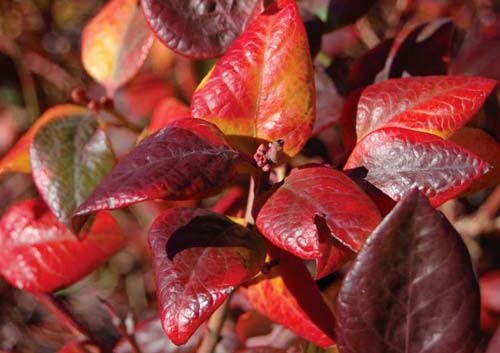During a vacation in France last year, I had an awakening of sorts in terms of my philosophy on garden design and plant selection. A number of the gardens and public parks that I visited incorporated vegetables like Swiss chard and kale in with annual flower plantings. As an avid gardener, and an even more avid eater, I wondered why I wouldn’t incorporate more vegetables and herbs into traditional ornamental plantings. I’ve always appreciated the beauty of edible plants, but never considered their value in an ornamental sense.
Home gardeners might consider incorporating edibles for the following reasons:
– Sun exposure: Ornamental beds are often the best or only location in home landscapes that receive sufficient sunlight – at least six hours – for vegetables and herbs.
– Convenience: Ornamental plantings are often close to the areas that home gardeners use most often, so incorporating edibles there might encourage gardeners to use fresh ingredients. It is also easier to stay on top of weeds and insect issues if you visit the area more frequently.
– Reduced grocery costs: Fresh fruits and vegetables, especially herbs, add to your monthly food bills. Growing your own produce could reduce the amount you spend on groceries.
– Improved health: Fresh vegetables are a great source of vitamins and minerals when properly prepared, and gardening can be great exercise.
The key to creating a visually appealing edible landscape is the artful combination of annuals and perennials. Most edible plants can act as substitutes for annual plants, but there are some options that can substitute for shrubs, vines and small trees.
University of Georgia Cooperative Extension offers the following plant recommendations for gardeners who plan to add edible plants to their landscapes.
– Annual color: The foliage and mid-rib color variations of rainbow chard, purple mustard, kale and lettuce will add dramatic effect. Calendula and nasturtium are edible flowers that can add color to salads, and nasturtium leaves can be used in pesto. Basil comes in many varieties and colors and can be added to many dishes, from eggs, to meats, to slices of fresh cucumber. Taller plants like corn, okra and Jerusalem artichokes can be planted at the back of a garden to create height and screening.
– Ground cover: Thyme, oregano and savory make excellent evergreen ground covers. Goldberg golden purslane and New Zealand spinach, or tetragonia, have succulent leaves and a sprawling growth habit. Strawberries will also spread and cover an area well.
– Shrubs and perennials: Blueberries have become a major cash crop in Georgia. They can become a fruitful addition to your landscape. In addition to growing nutritious summer fruit, blueberry plants provide both spring flowers and fall color. Pomegranate, figs and jujubes are all great plants that grow well in Georgia. American hazelnut is a deciduous shrub/small tree with evergreen, needle-like foliage. Garden sage is an evergreen that has a wonderful softness to its leaves, like a dusty miller or lamb’s-ear, and rosemary is a great addition, too.
– Edible vines and climbers: Structures like arbors and trellises are great ways to add interest to your garden. And there are great substitutions for traditional climbing rose or clematis to plant aside these structures. Muscadines are extremely hardy and have few problems compared to many bunch grapes. Malabar spinach is an easy-to-control annual plant that has delicious greens and beautiful red stems. Many types of beans will grow rapidly and cover a structure, and Chinese red noodle bean produces 1- to 3-foot-long burgundy beans that will amaze.
– Trees: Apples can maximize small spaces with a few espaliered trees. Serviceberry, or juneberry, is a great alternative to a crape myrtle and birds love it. Mulberries are delicious and very easy to grow, but make sure to plant them in an area where you won’t mind a mess. Montmorency and Balaton are excellent small tree varieties of pie, or “sour,” cherries that perform well.
Overall, when adding new plant varieties to your landscape, consider your culinary taste and add a few edible plants. For more information on adding new plant material to your landscape, review UGA Extension publications at extension.uga.edu/publications.








